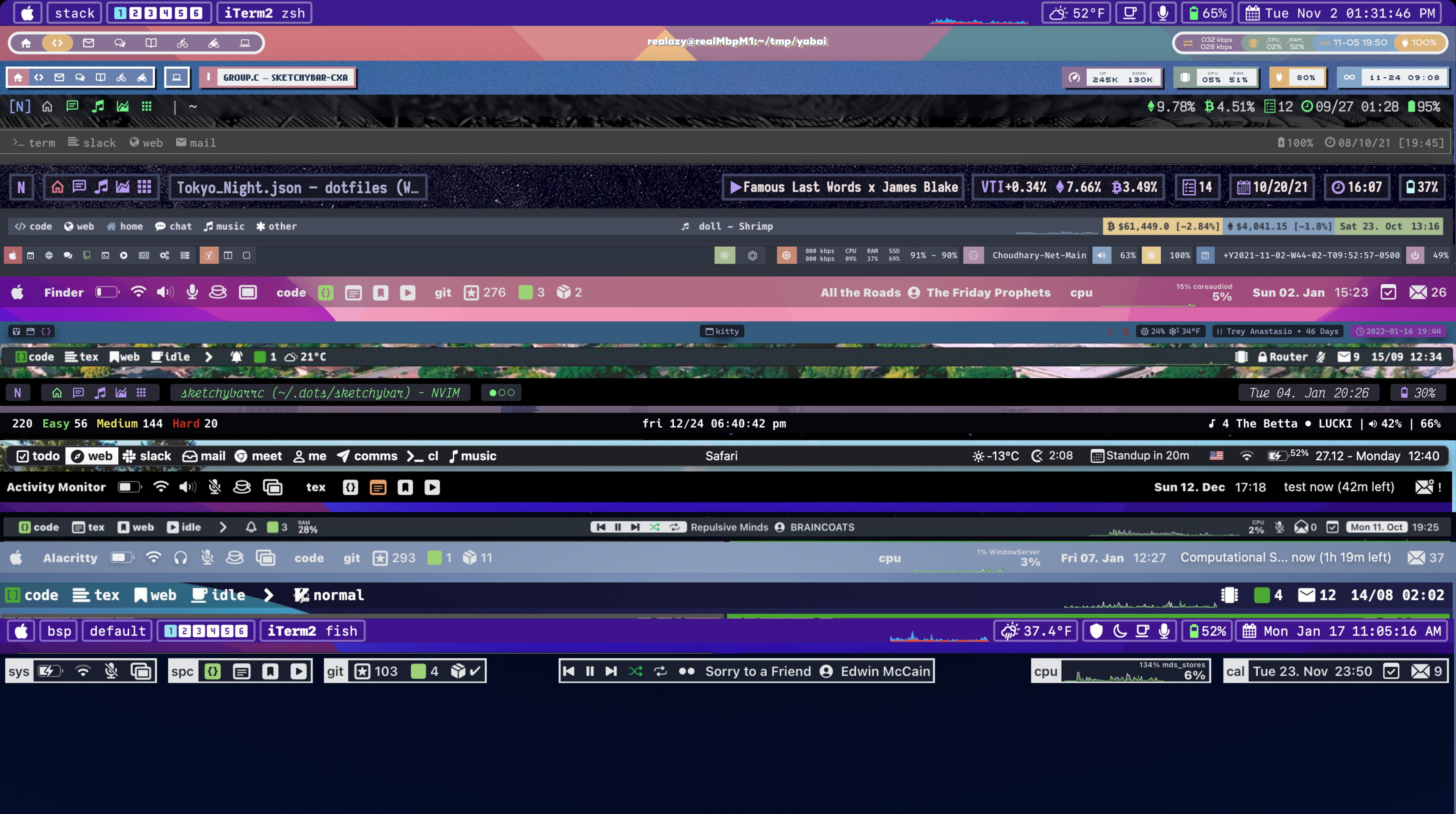Features
Features
- Performance friendly
- Fully scriptable
- Fully configurable (Fonts, Backgrounds, Colors, Icons, etc.)
- Supports drawing native macOS menu bar applications (aliases)
- Powerful event and scripting system
- Animation System
- Popup Menus
- Mouse Support
- Support for graphs
- Per display and per space individualization
The configuration of the bar takes place in a configuration file where almost everything can be configured. Basically, the bar itself is a rectangle that can hold arbitrarily many items, which can be configured to do awesome stuff. An item will occupy a space in the bar and can be equipped to show an icon and a label. The icon and label can be changed through scripts that can be attached to the item. It is also possible to subscribe an item to certain events for their script execution action, which makes very powerful items possible. Furthermore, an item can be assigned to mission control spaces or displays, such that they only show on a certain space or display, which makes multi-desktop configuration of the bar possible and opens the possibility to create individualized bar configuration on a per display and per space level. These simple ingredients make items almost endlessly customizable and can be used to display arbitrary information and perform useful actions.
Some special features can not be accomplished with a simple item, this is where the components come into play. They basically are items with extra steps. They contain all the properties a regular item does, but they can do specialized tasks a simple item can not. For example, there is a graph component, which can be used to display graphs in the bar.
For more details on how the configuration works, see the configuration section.
Examples
